Influence of Magnetic Pole Stepping Combined with Auxiliary Stator Slots on the Stability of Dual-Rotor Disc Motors
Abstract
:1. Introduction
2. Methods
2.1. No-Load Back EMF Waveform Characteristics
2.2. Cogging Torque Characteristics
3. Results and Discussion
3.1. No-Load Back EMF Waveform Optimization
3.2. Cogging Torque Optimization
3.3. Comparison of Motor Performance before and after Optimization
4. Conclusions
- When the permanent magnet is the second-order magnetic pole, the no-load back EMF distortion rate of the motor is minimized from the previous 4.69% to 1.9%.
- Two rectangular auxiliary slots opened by the stator teeth are studied after the improvement in the magnetic pole structure. When the slot width is 2 mm, the slot depth is 0.8 mm, and the angle between the centerline of the auxiliary slots is at an angle of 3° with the centerline of the stator teeth, the peak motor cogging torque is reduced to 0.75 N·m, and the cogging torque is obviously weakened; the is reduced to 1.87%, and the no-load back electromotive force fundamental content rises obviously, and the multiple harmonic content is reduced.
- After the simultaneous improvement in the rotor pole structure and stator tooth structure, the motor output torque pulsation of the motor is reduced, the pulsation coefficient is reduced from 25.27% to 9.79%, and the average value of the torque is reduced from 10 N·m to 9.5 N·m; this is related to the fact that the stepped magnet structure reduces the volume of the permanent magnets on the basis of the original magnets structure.
Author Contributions
Funding
Data Availability Statement
Conflicts of Interest
Nomenclature
| Total harmonic distortion | EMF | Electromotive force | |
| The fundamental component of the no-load back electromotive force | The odd-order harmonic components of the no-load back electromotive force | ||
| The magnetic field energy | The position angle | ||
| The distribution function of air-gap magnetic flux density | The magnetic permeability of the air gap | ||
| The mechanical angle of rotation of the motor | The number of pole pairs in the rotor | ||
| The remanent magnetization of the permanent magnet | The pole arc coefficient of the permanent magnet | ||
| The number of stator slots | The Fourier coefficient of the magnetic conductivity function | ||
| The outer radius of the armature | The inner radius of the stator yoke | ||
| The axial length of the armature core | The average diameter of the motor | ||
| The effective length of the armature | The effective air-gap length of the motor | ||
| Number of cycles of the fundamental wave of the cogging torque | Air-gap length distribution function before stator slotting | ||
| The air-gap length between the stator and rotor | The depth of the stator slot | ||
| The width of the stator tooth | The distance between the centerlines of two adjacent stator teeth | ||
| a | The width of the auxiliary slot | b | The depth of the auxiliary slot |
| c | The distance between the outer edge of the auxiliary slot and the corresponding stator tooth edge | d | The distance between the inner edges of the two auxiliary slots |
| The angle between the centerline of the stator tooth and the centerline of one of the auxiliary slots | The number of pole steps |
References
- Huang, Y.K.; Zhou, T.; Dong, J.N.; Guo, B.C.; Zhang, L. A review of axial permanent magnet motor and its research and development. Proc. Chin. Soc. Electr. Eng. 2015, 35, 192–205. [Google Scholar] [CrossRef]
- Li, Y.; Xing, J.; Wang, T.; Lu, Y. Programmable Design of Magnet Shape for Permanent-Magnet Synchronous Motors with Sinusoidal Back EMF Waveforms. IEEE Trans. Magn. 2008, 44, 2163–2167. [Google Scholar] [CrossRef]
- Hua, W.; Cheng, M.; Zhu, Z.Q.; Howe, D. Analysis and Optimization of Back EMF Waveform of a Flux-Switching Permanent Magnet Motor. IEEE Trans. Energy Convers. 2008, 23, 727–733. [Google Scholar] [CrossRef]
- Shokri, M.; Rostami, N.; Behjat, V.; Pyrhonen, J.; Rostami, M. Comparison of Performance Characteristics of Axial-Flux Permanent-Magnet Synchronous Machine with Different Magnet Shapes. IEEE Trans. Magn. 2015, 51, 8115206. [Google Scholar] [CrossRef]
- Liu, J.; Cai, W. Reverse potential harmonic weakening method for automotive built-in permanent magnet drive motor. Micromotor 2018, 51, 7–10. [Google Scholar]
- Wu, J.; Zhao, Q.; Zhuang, B.; Yang, C. A pole shape optimization method for weakening the reverse potential harmonics of permanent magnet synchronous motors. Micromotor 2017, 50, 24–26. [Google Scholar]
- Ding, J.L.; Yu, S.B.; Zhao, H.N.; Xia, P.P. A pole shape optimization method for surface-mounted permanent magnet synchronous motor. Micromotor 2020, 48, 18–21. [Google Scholar]
- Qi, X.D.; Gao, F.Y.; Li, X.F.; Li, Z.J.; Yang, Q.L.; Yuan, C. Optimized design of new eccentric poles for surface-mounted permanent magnet synchronous motors. J. Electron. Meas. Instrum. 2020, 34, 93–100. [Google Scholar] [CrossRef]
- Liu, Y.; Yu, H.; Wang, Y. Establishment of a New Dual Rotor Flux Switching Motor Magnetic Circuit Model and Optimization of No-Load Back EMF. IEEE Trans. Magn. 2019, 55, 7503005. [Google Scholar] [CrossRef]
- Cheng, B.; Pan, G.; Mao, Z. Analytical Calculation and Optimization of the Segmented-Stator Dual-Rotor Axial Flux Permanent Magnet Motors. IEEE Trans. Magn. 2020, 56, 8101709. [Google Scholar] [CrossRef]
- Zhang, X.; Zhang, C.; Yu, J.; Du, P.; Li, L. Analytical Model of Magnetic Field of a Permanent Magnet Synchronous Motor with a Trapezoidal Halbach Permanent Magnet Array. IEEE Trans. Magn. 2019, 55, 8105205. [Google Scholar] [CrossRef]
- Taravat, S.; Kiyoumarsi, A.; Bracikowski, N. Mitigation of cogging torque in transverse-flux permanent-magnet machines with flux concentrators by step skewing of stator pole. IET Electr. Power Appl. 2020, 14, 2378–2388. [Google Scholar] [CrossRef]
- Ma, C.; Xu, Y.; Sun, M.; Zhang, Z. Weakening the Cogging Torque of Permanent Magnet Motor Based on Magnetic Pole Segmentation and Rotor Slotting. Micro Mot. 2022, 55, 42–45. [Google Scholar] [CrossRef]
- Güleç, M.; Yolaçan, E.; Demir, Y.; Ocak, O.; Aydin, M. Modeling based on 3D finite element analysis and experimental study of a 24-slot 8-pole axial-flux permanent-magnet synchronous motor for no cogging torque and sinusoidal back-EMF. Turk. J. Electr. Eng. Comput. Sci. 2016, 24, 262–275. [Google Scholar] [CrossRef]
- Aydin, M.; Gulec, M. A New Coreless Axial Flux Interior Permanent Magnet Synchronous Motor with Sinusoidal Rotor Segments. IEEE Trans. Magn. 2016, 52, 8105204. [Google Scholar] [CrossRef]
- Huang, K.; Li, H.; Zhou, Y. Research on the method of weakening cogging force by using auxiliary slots. J. Electr. Mach. Control 2014, 18, 54–59+66. [Google Scholar] [CrossRef]
- Xu, L.; Xu, Y.; Gong, J. Analysis and Optimization of Cogging Torque in Yokeless and Segmented Armature Axial-Flux Permanent-Magnet Machine with Soft Magnetic Composite Core. IEEE Trans. Magn. 2018, 54, 8106005. [Google Scholar] [CrossRef]
- Xiao, L.; Li, J.; Qu, R.; Lu, Y.; Zhang, R.; Li, D. Cogging Torque Analysis and Minimization of Axial Flux PM Machines with Combined Rectangle-Shaped Magnet. IEEE Trans. Ind. Appl. 2017, 53, 1018–1027. [Google Scholar] [CrossRef]
- Zhao, B.; Gong, J.; Tong, T.; Xu, Y.; Semail, E.; Nguyen, N.-K.; Gillon, F. A Novel Five-Phase Fractional Slot Concentrated Winding with Low Space Harmonic Contents. IEEE Trans. Magn. 2021, 57, 8104605. [Google Scholar] [CrossRef]
- Sun, K.; Tian, S. Multiobjective Optimization of IPMSM with FSCW Applying Rotor Notch Design for Torque Performance Improvement. IEEE Trans. Magn. 2022, 58, 8104909. [Google Scholar] [CrossRef]
- Mohammadpour, A. Winding factor calculation for analysis of back EMF wave form in air-core permanent magnet linear synchronous motors. Electr. Power Appl. 2012, 6, 253–259. [Google Scholar] [CrossRef]
- Wang, X. Permanent Magnet Motor; Chian Electric Power Press: Beijing, China, 2011. (In Chinese) [Google Scholar]
- Wanjiku, J.; Khan, M.A.; Barendse, P.S.; Pillay, P. Influence of Slot Openings and Tooth Profile on Cogging Torque in Axial-Flux PM Machines. IEEE Trans. Ind. Electron. 2015, 62, 7578–7589. [Google Scholar] [CrossRef]
- Wang, Y.; Tang, C.; Yan, G. Suppression of cogging torque of permanent magnet motor by opening auxiliary notches in stator tooth crown. Micromotor 2014, 47, 20–23. [Google Scholar] [CrossRef]
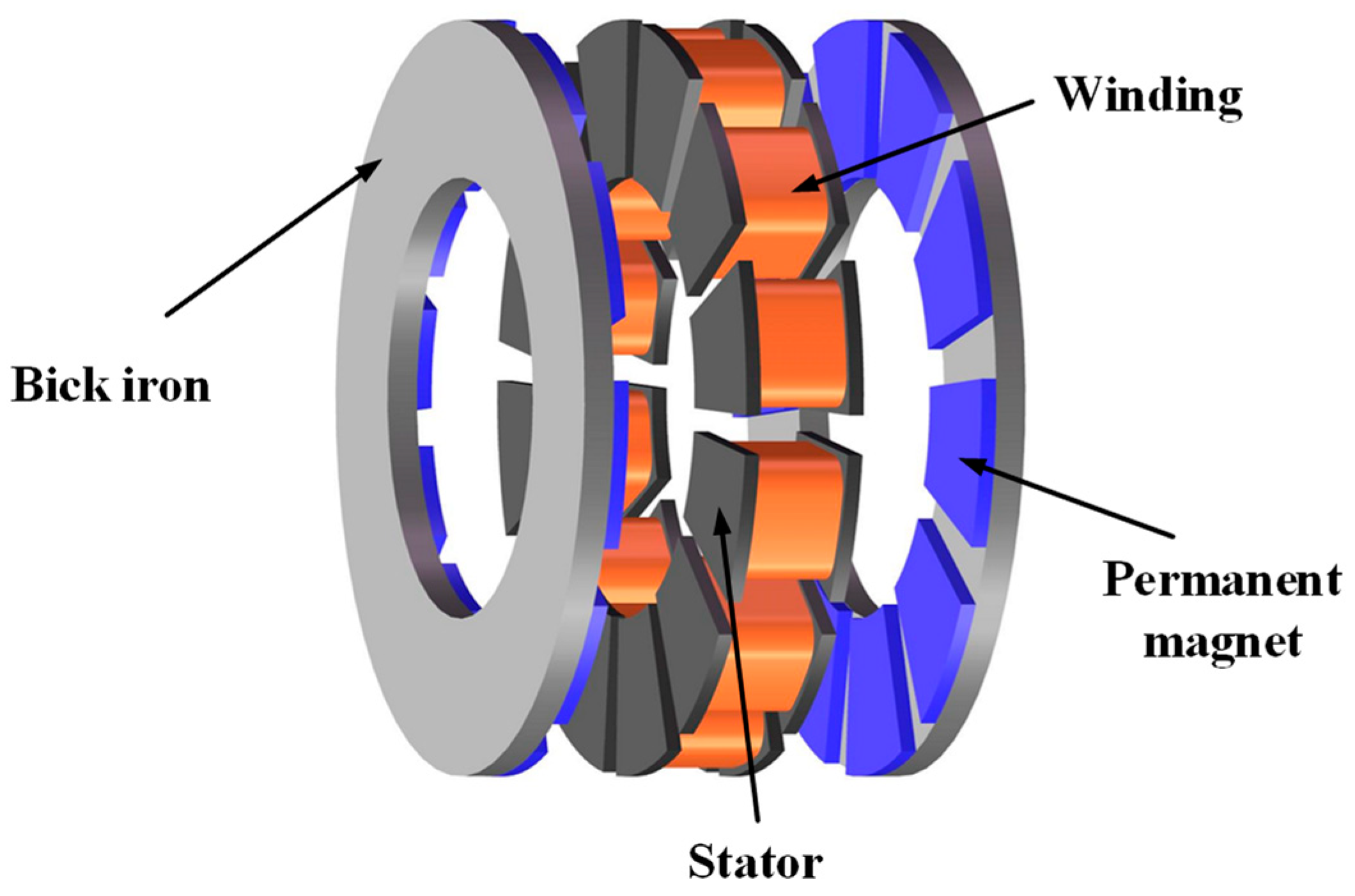
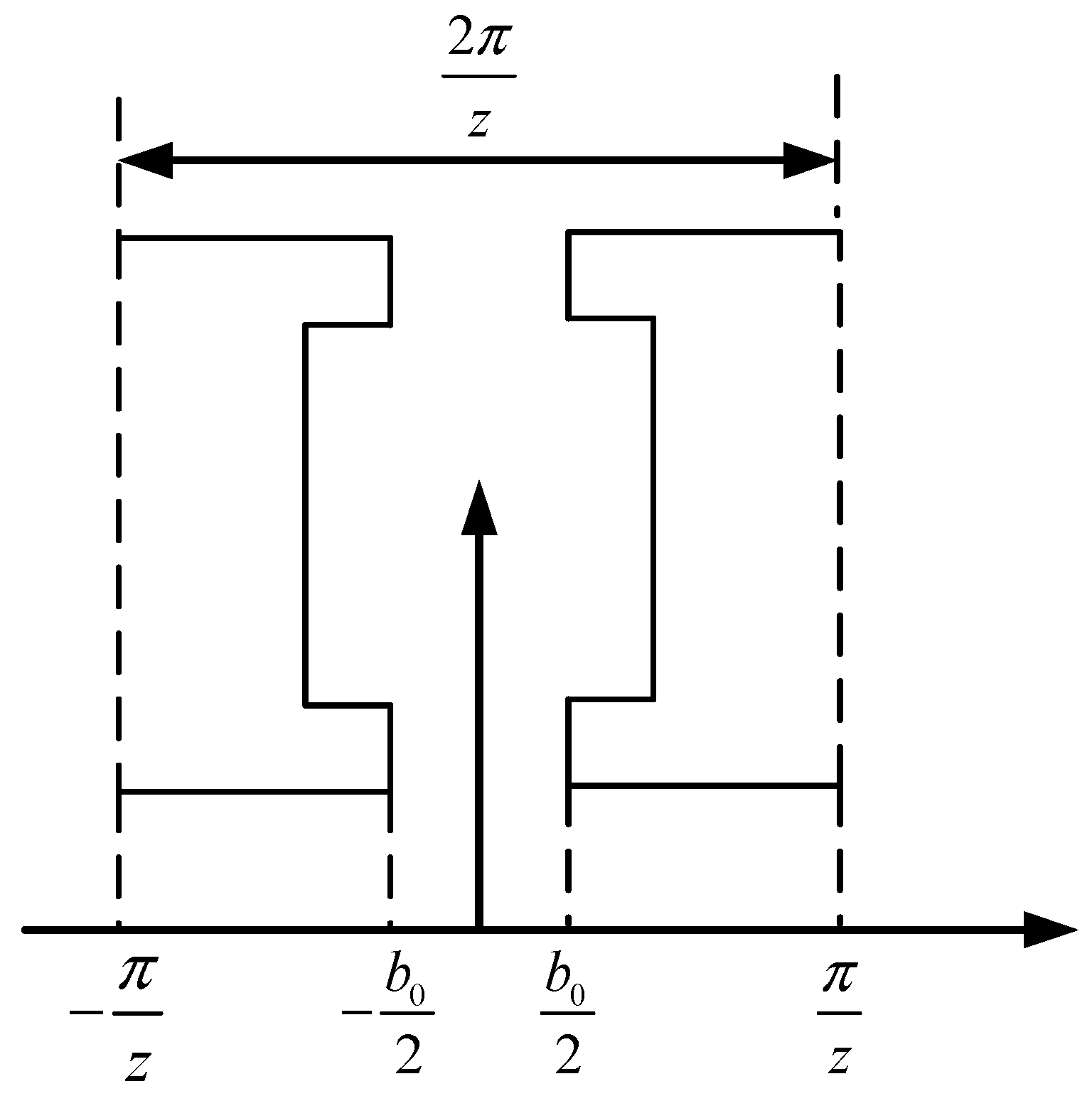


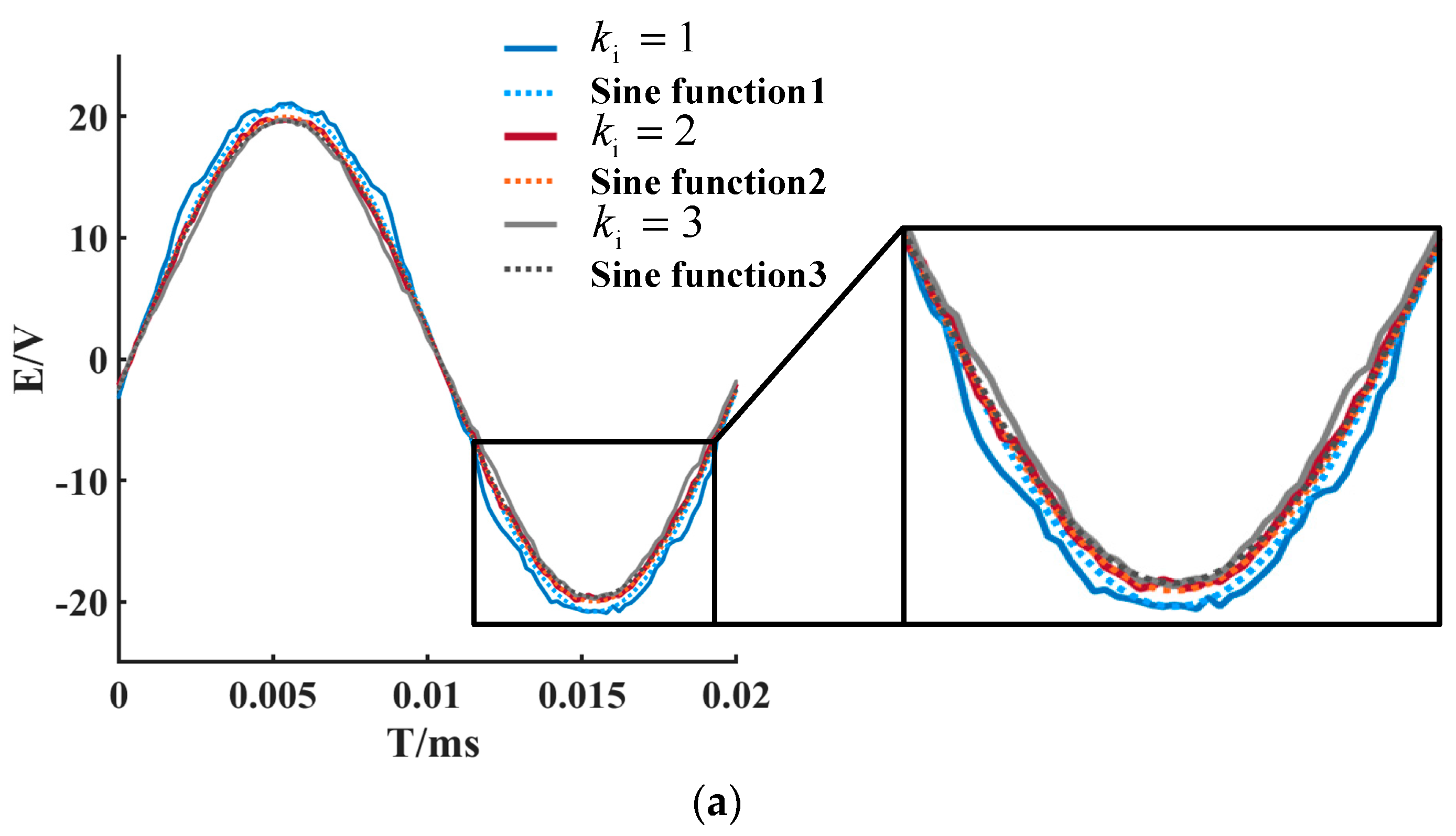
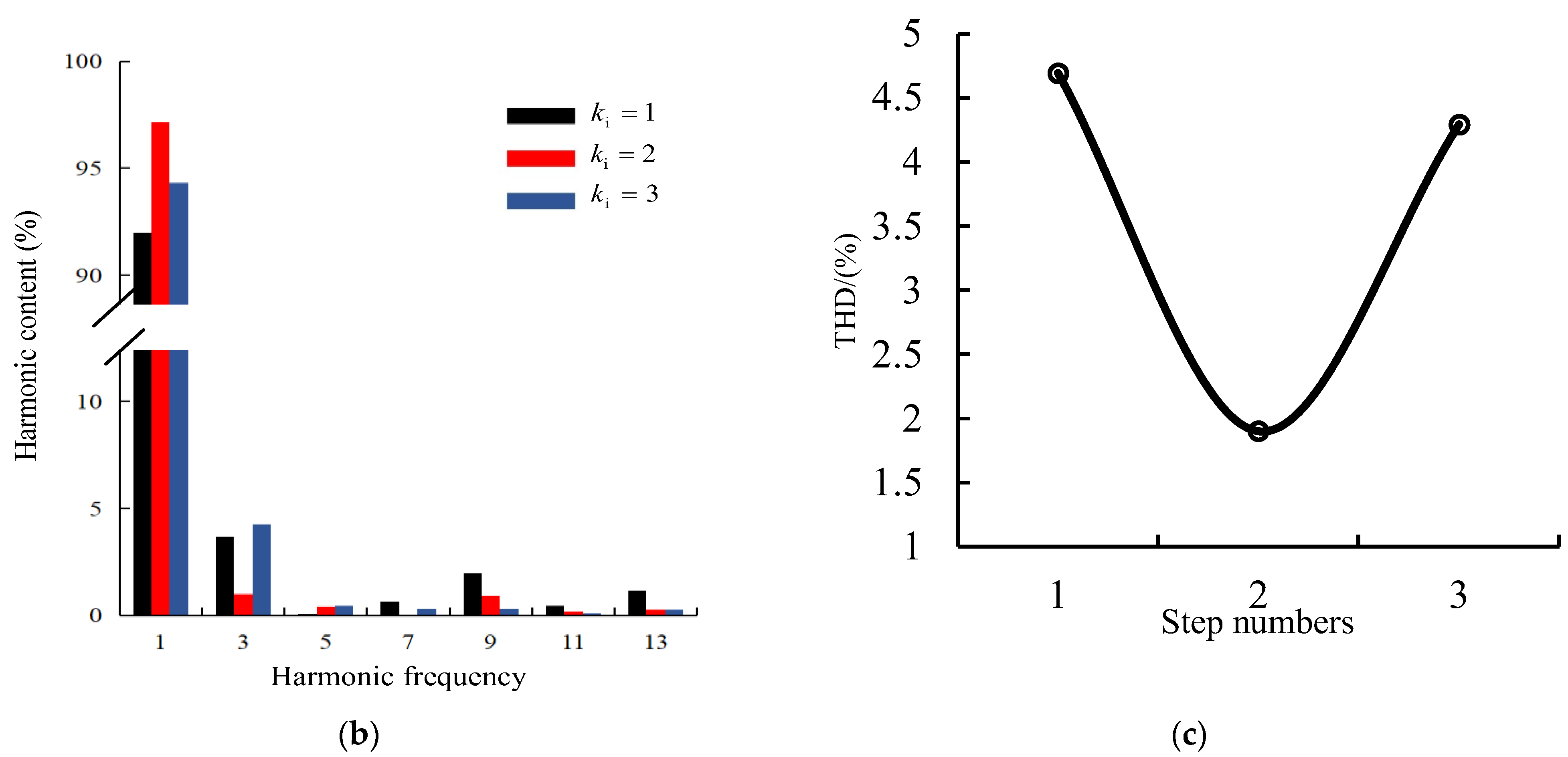
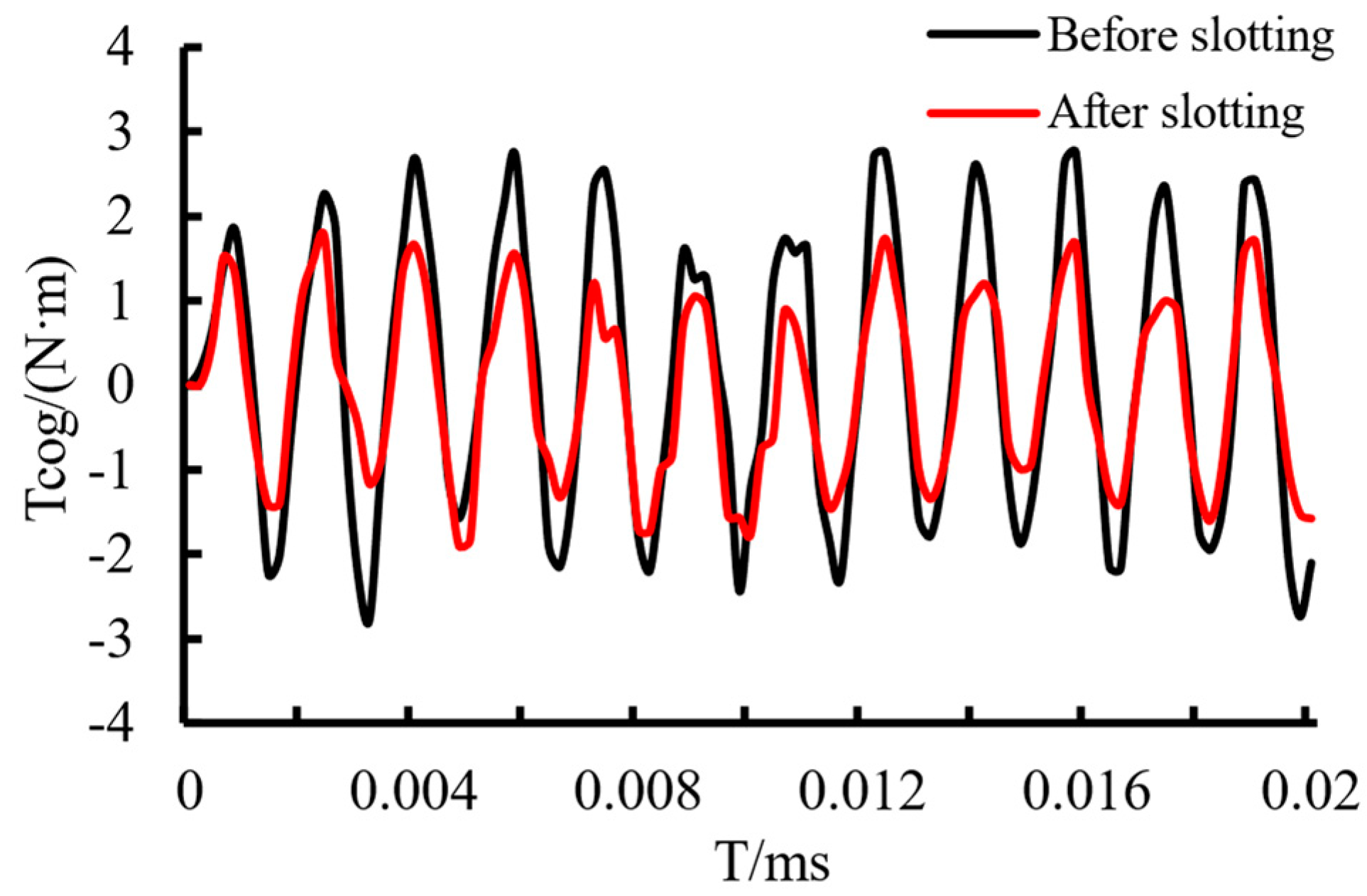
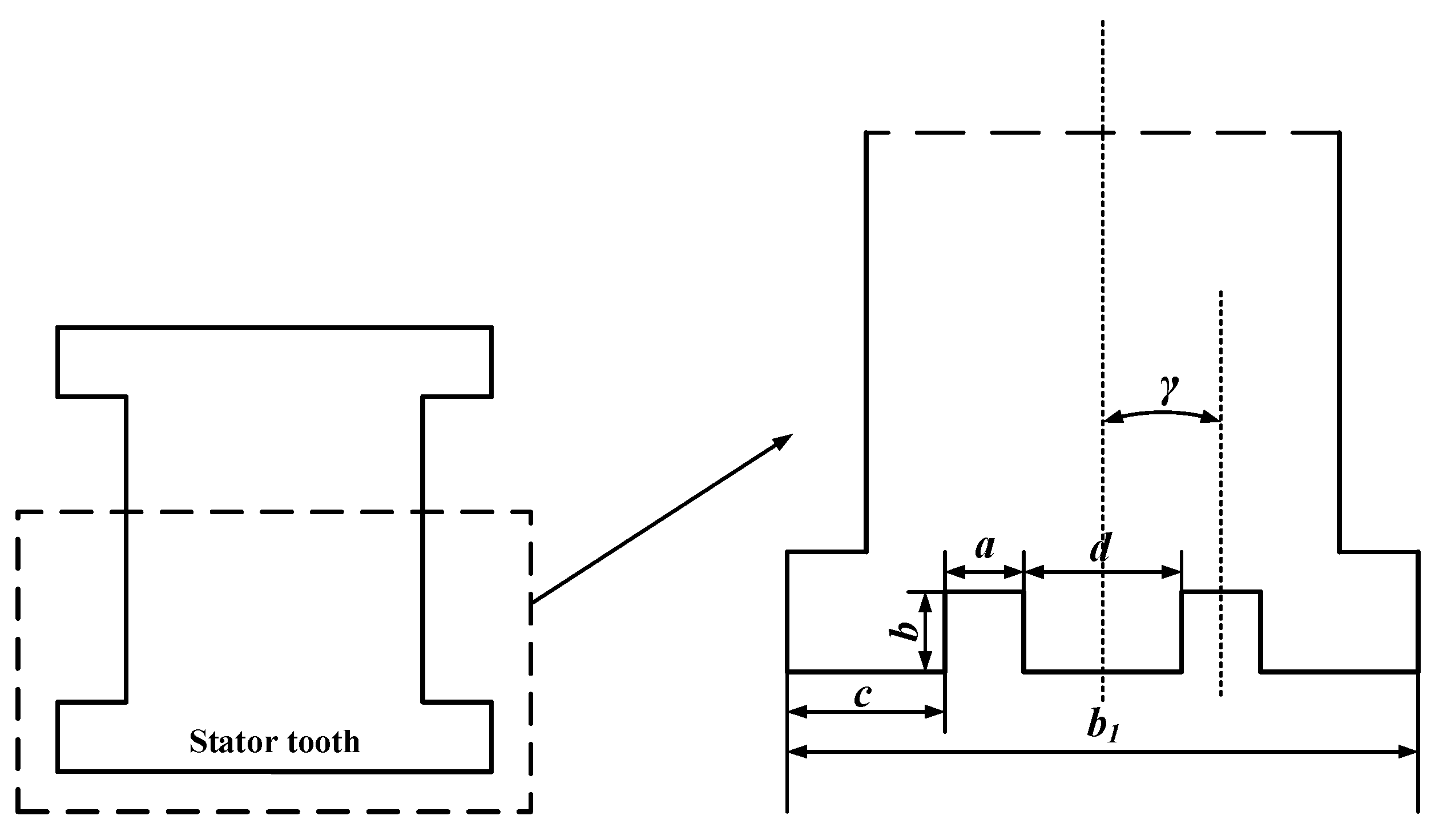

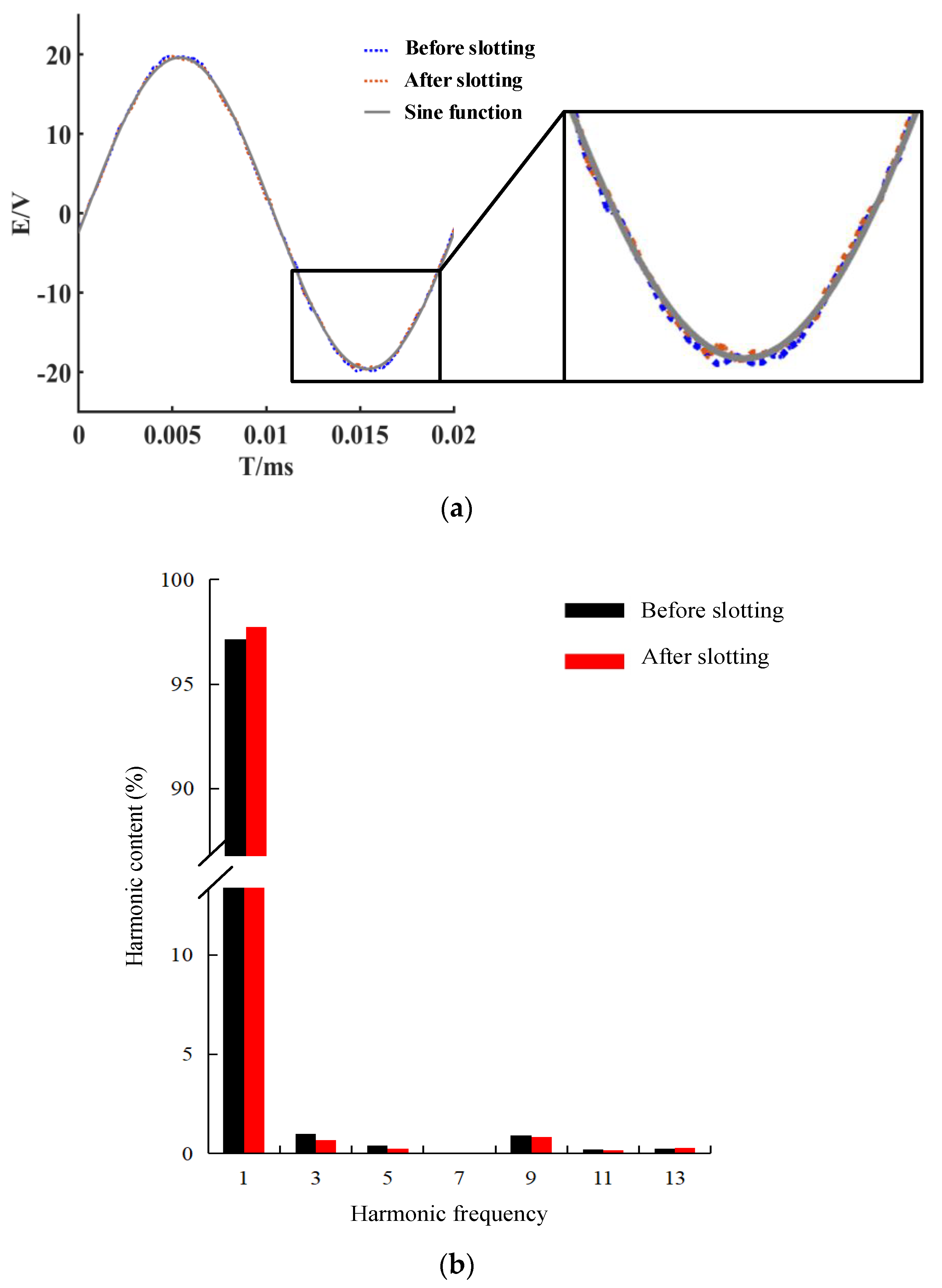
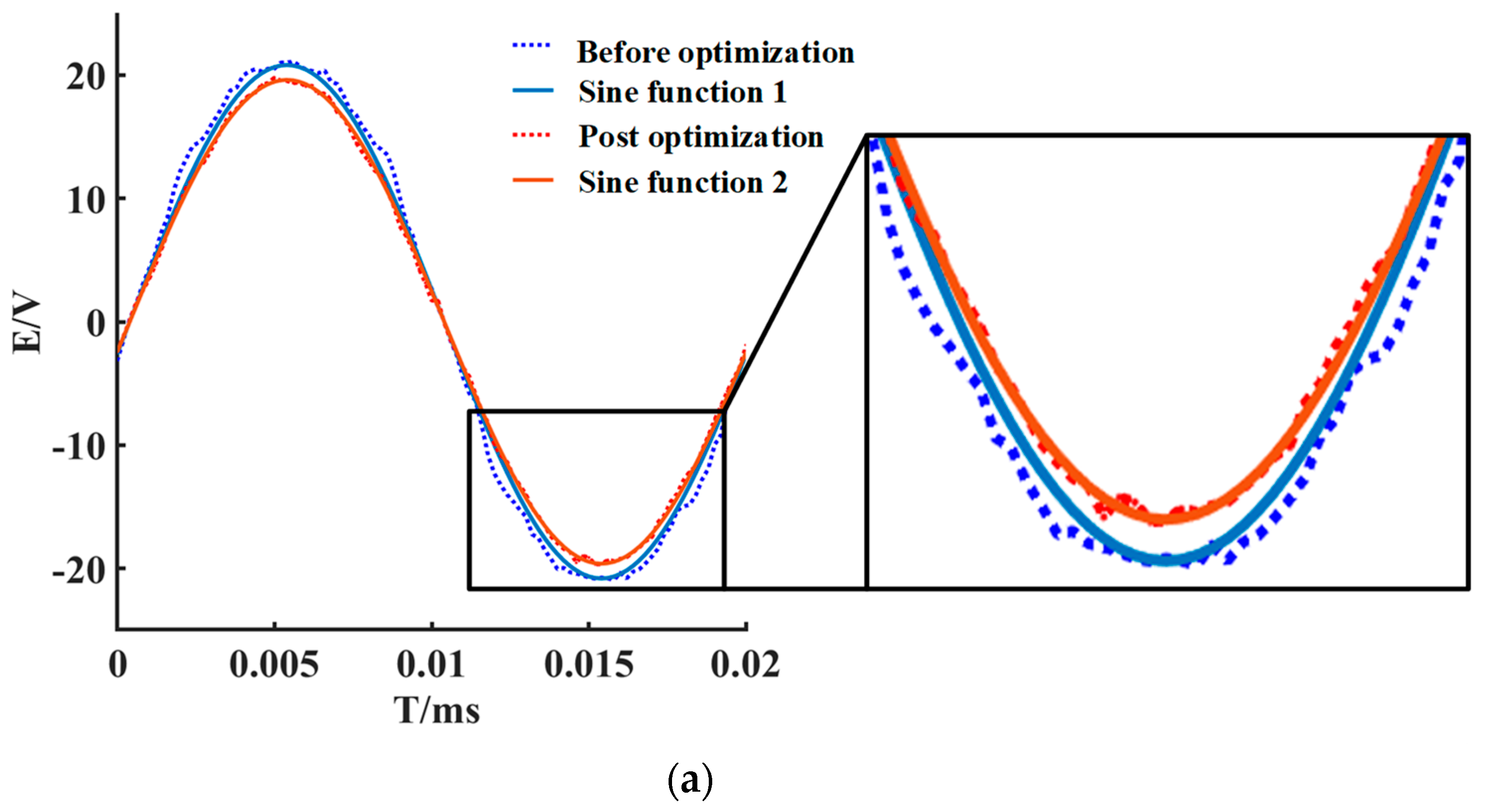
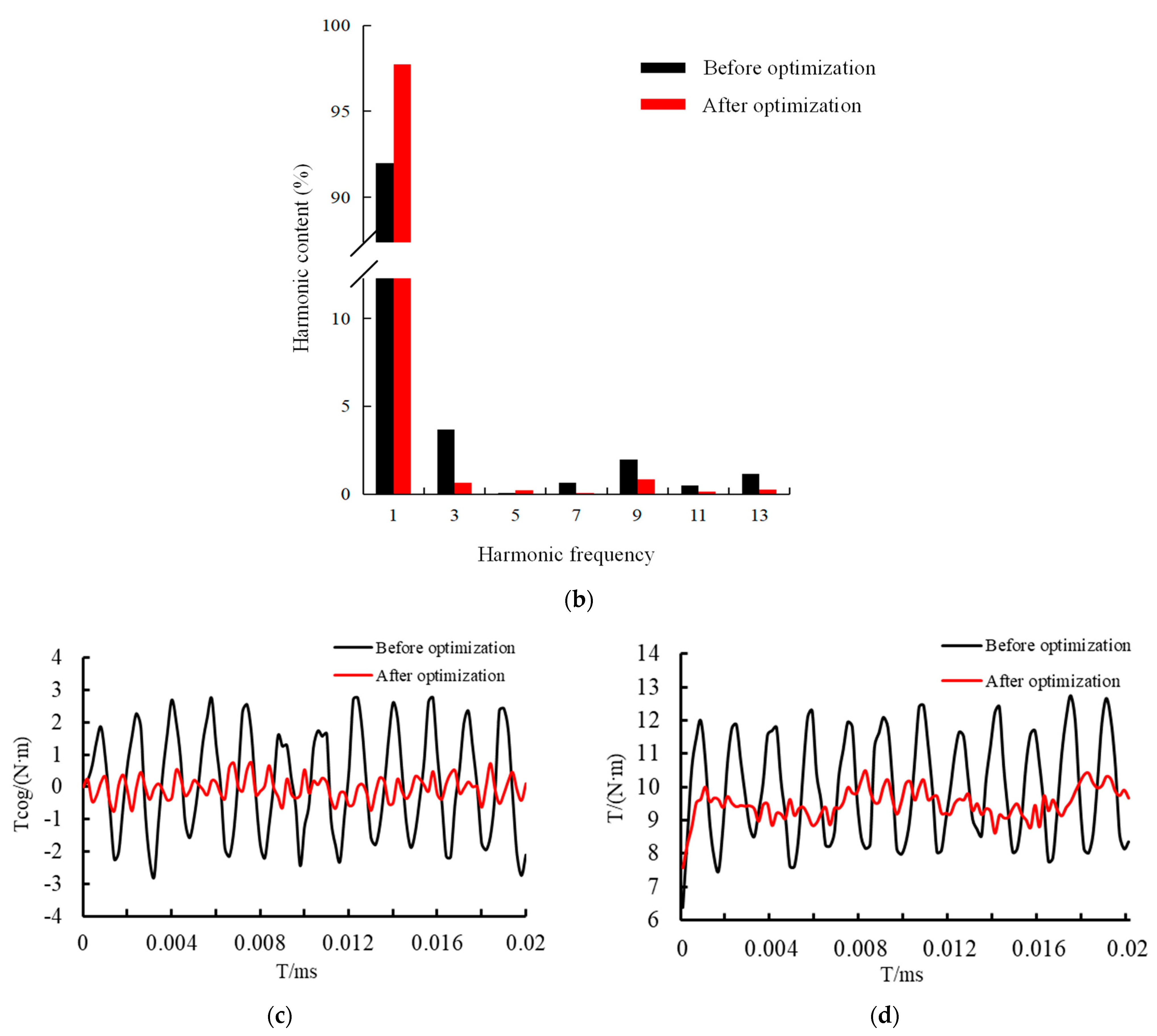
| Motor Parameters | Value |
|---|---|
| Speed/(r/min) | 300 |
| Magnetic pole outer diameter/mm | 240 |
| Magnetic pole inner diameter/mm | 140 |
| Air-gap length/mm | 1 |
| Magnet thickness/mm | 5 |
| Polar arc coefficient | 0.7 |
| Number of poles | 20 |
| Number of slots | 24 |
| Motor Parameters | Before Optimization | After Optimization |
|---|---|---|
| No-load back EMF/V | 20.4 | 19.6 |
| THD | 4.69% | 1.87% |
| Cogging torque peak/N·m | 2.8 | 0.75 |
| Output torque peak/N·m | 12.74 | 10.49 |
| Average output torque/N·m | 10 | 9.50 |
| Torque ripple coefficient | 25.27% | 9.79% |
Disclaimer/Publisher’s Note: The statements, opinions and data contained in all publications are solely those of the individual author(s) and contributor(s) and not of MDPI and/or the editor(s). MDPI and/or the editor(s) disclaim responsibility for any injury to people or property resulting from any ideas, methods, instructions or products referred to in the content. |
© 2023 by the authors. Licensee MDPI, Basel, Switzerland. This article is an open access article distributed under the terms and conditions of the Creative Commons Attribution (CC BY) license (https://creativecommons.org/licenses/by/4.0/).
Share and Cite
Guo, T.; Cao, Y.; Qian, Z.; Xia, J.; Kang, X.; Xia, G.; Yang, Y.; Zhang, W.; Wang, Y.; Wu, G. Influence of Magnetic Pole Stepping Combined with Auxiliary Stator Slots on the Stability of Dual-Rotor Disc Motors. Energies 2023, 16, 7512. https://doi.org/10.3390/en16227512
Guo T, Cao Y, Qian Z, Xia J, Kang X, Xia G, Yang Y, Zhang W, Wang Y, Wu G. Influence of Magnetic Pole Stepping Combined with Auxiliary Stator Slots on the Stability of Dual-Rotor Disc Motors. Energies. 2023; 16(22):7512. https://doi.org/10.3390/en16227512
Chicago/Turabian StyleGuo, Tong, Yang Cao, Zhong Qian, Jianping Xia, Xuhong Kang, Guanben Xia, Yanan Yang, Wendong Zhang, Yujie Wang, and Guoqing Wu. 2023. "Influence of Magnetic Pole Stepping Combined with Auxiliary Stator Slots on the Stability of Dual-Rotor Disc Motors" Energies 16, no. 22: 7512. https://doi.org/10.3390/en16227512
APA StyleGuo, T., Cao, Y., Qian, Z., Xia, J., Kang, X., Xia, G., Yang, Y., Zhang, W., Wang, Y., & Wu, G. (2023). Influence of Magnetic Pole Stepping Combined with Auxiliary Stator Slots on the Stability of Dual-Rotor Disc Motors. Energies, 16(22), 7512. https://doi.org/10.3390/en16227512






